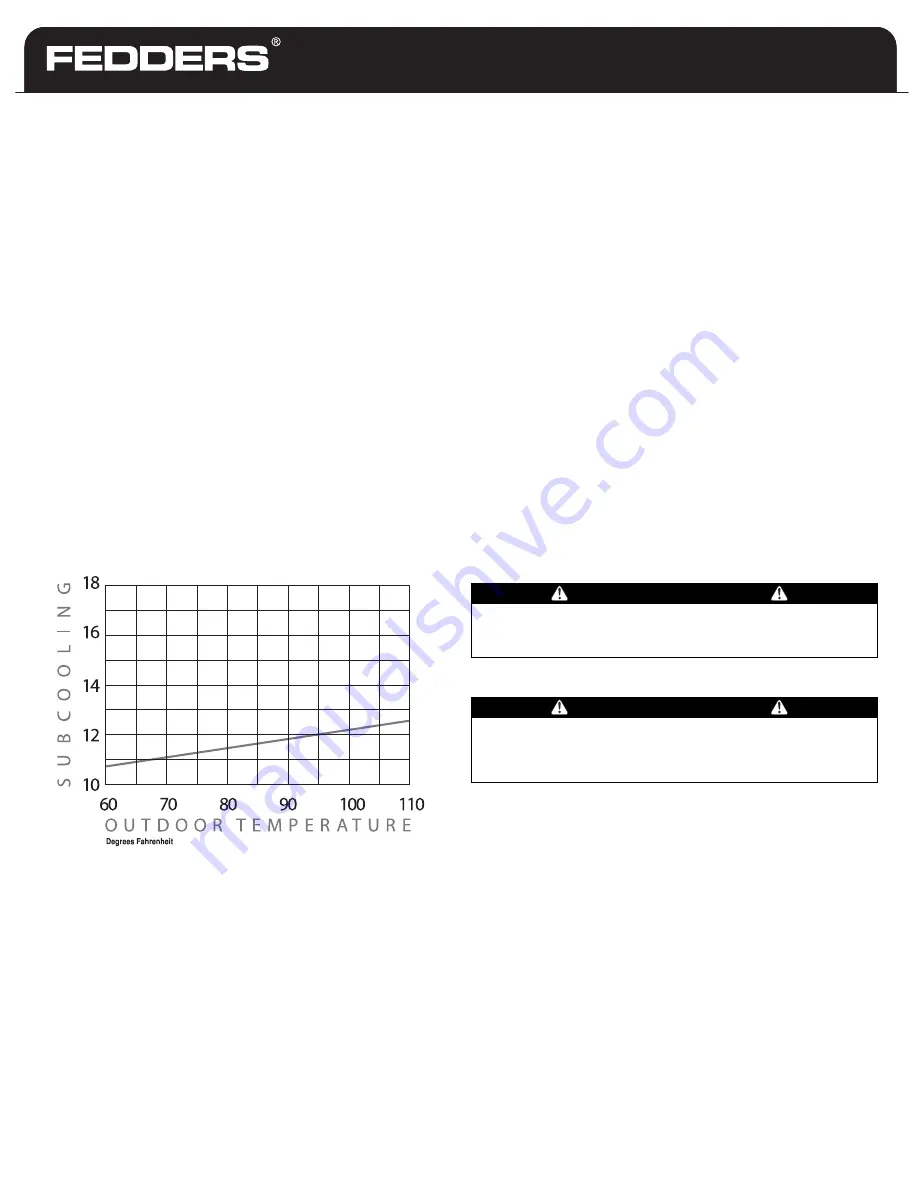
1. If the furnace and air conditioner are on separate
thermostats, turn the furnace thermostat off during the
cooling season to prevent simultaneous operation of the
heating and cooling systems. Reverse the procedure during
the heating season.
Adjust thermostat temperature and fan settings according
to the thermostat manufacturer’s recommendations. It is not
recommended to vary the temperature settings more than 5
degrees. Varying the temperature more than 5 degrees or
turning the thermostat off for periods less than 12 hours can
actually cost you more in energy consumption than keeping
the temperature constant. Consider indoor plants and pets
when varying the temperature from the normal comfort
level.
2. IMPORTANT: Wait at least 3 minutes after turning the air
conditioner off before trying to restart. If an attempt is
made to start the compressor before the refrigerant
pressures are equalized, the compressor motor may trip on
its overload. An additional waiting period will be required
before restarting.
OPERATION INSTRUCTIONS
1. Keep the condenser (outdoor coil) clean. Wash it down with
a garden hose if necessary.
For continuing high performance and to minimize possible
equipment failure, periodic maintenance must be performed on
this equipment. Frequency of maintenance may vary depending
upon geographic areas, such as costal applications.
MAINTENANCE INSTRUCTIONS
WARNING
BE SURE THE UNIT DISCONNECT IS IN THE “OFF”
POSITION AND THAT ALL ELECTRICAL POWER TO THE
UNIT IS TURNED “OFF” BEFORE CLEANING THE SYSTEM.
2. Remove any loose grass, leaves, papers, etc., from the area
around the condenser coil. These could reduce the air supply
through the coil and reduce the amount of cooling.
3. Always install and keep system filters clean. Consult your
licensed Contractor for filter replacement schedules and
instructions.
WARNING
SERIOUS PERSONAL INJURY OR DEATH MAY RESULT IF
WATER SPRAY IS DIRECTED TOWARD LIVE ELECTRICAL
CONNECTIONS OR POWER SOURCES.
Model
5
SUB-COOLING CHARGING
Coils with TXVs should be charged 10-12 degrees (+ or – one
degree) of sub-cooling. For proper sub-cooling readings, a
standard high side gauge is required for pressure readings.
Use the chart below to determine the required sub-cooling value.
INSTRUCTIONS
1. Measure the outdoor air temperature. (T1)
2. Measure the liquid line pressure at the outdoor unit and
determine condenser refrigerant temperature by the scale on
the high side pressure gauge. (T2)
3. Measure the liquid line temperature on the liquid line at the
outdoor unit. (T3)
4. Subtract T3 from T2. (T2 – T3) This is the subcooling value.
Compare this value and the outdoor temperature (T1), to the
charts below. If the value is below the line, add refrigerant. If
the value is above the line, remove refrigerant charge.
NOTE: For the majority of installations no adjustment to the
TXV setting is required. However, if the measured superheat
at the evaporator is less than 4° or greater than 8° an
adjustment is required. The adjustment stem is at the base of
the valve under the flare nut. To increase superheat tighten
the stem clockwise and to decrease superheat back-out the
stem counter-clockwise. Use a 1/4” refrigeration service
wrench for this function.
NOTE: When removing refrigerant, always use standard reclaim
procedures.
FINAL CHECKS FOR INSTALLER
1. Ensure that all wiring is routed away from tubing and sheet
metal edges to prevent rub-through or wire pinching.
2. Ensure that all wiring and tubing is secure in unit before
adding panels and covers.
3. Tighten service valve stem caps to 1/12 turn past finger tight.
4. Leave Owner’s Manual with owner. Explain system operation
and periodic maintenance requirements outlined in manual.
°F
°F
°F
°F
°F
°F
SUB-COOLING CHART FOR UNITS WITH TXV


























